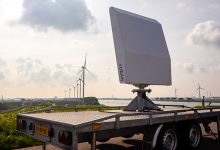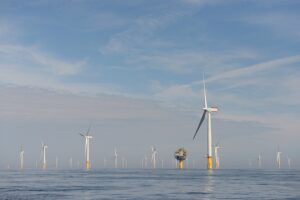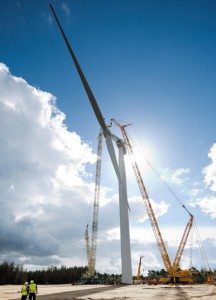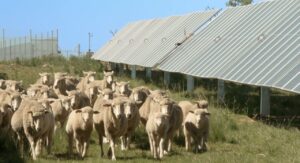Tasmania’s Musselroe Wind Farm will undertake an Australian first trial of new radar technology that the operators hope will help reduce instances of collisions with wedge-tailed eagles.
The wind farm will deploy the ‘Max’ radar technology, developed by Dutch company Robin Radars, that will help detect and monitor birds that fly near the wind farm, providing the opportunity to adjust the operation of wind turbines and ensure collisions can be avoided.
The wind farm operators, Woolnorth Wind Farms, particularly hope to minimise the impact of the wind farm on wedge-tailed eagle populations.
“This technology is an avian-specific radar, which allows remote monitoring of birds in the landscape and can initiate the shutdown of turbines,” Woolnorth general manager Stephen Ross said.
“It provides full 3D coverage from the horizon, up to one kilometre in height, and can automatically detect and log hundreds of birds simultaneously.”
“Protecting Tasmania’s environment, including eagles, is extremely important to Woolnorth, and adaptive management processes are an essential part of our approach,” Ross added.
The 168MW Musselroe wind farm consists of 56 wind turbines positioned along Tasmania’s north-east.
Prior research that monitored the movement of birds around the Musselroe wind farm found that there are particular conditions that give rise to an increased likelihood of birds colliding with wind turbines.
The company determined that the development of a wind turbine curtailment system, using information gathered using the radar device to adjust the operation of particular turbines, provided the best chance to minimise the risk of bird strikes.
“Protecting Tasmania’s environment, including eagles, is extremely important to Woolnorth, and adaptive management processes are an essential part of our approach,” Ross said.
“Our research shows each collision is likely to be caused by a unique set of circumstances, and we have determined that a wind turbine curtailment system is the best option to address the issue.”
Wildlife biologist Nick Mooney told the ABC in July that since the Musselroe wind farm commenced operation in 2013, there had been 11 wedge-tailed eagle deaths and one white-bellied sea eagle death, due to collisions with turbines. Dozens of Tasmanian wedge-tailed eagles are killed each year due as a result of coming into contact with power lines.
The radar system is expected to be installed mid-next year, with the wind farm operators requiring a few months to calibrate the system and customise the turbine shutdown procedures.
The company hopes that if the system proves effective, it could be deployed at other wind farms across Tasmania and wider Australia.
“With many wind farms in the development cycle, the trial results could allow for wind farms to be approved, developed and operated with a higher degree of certainty in relation to collision risk to eagles and the most effective way to manage it,” Ross added.
“Woolnorth continue to work with state and Commonwealth regulators to mitigate collisions.”
Earlier in the year, the Robbins Island wind farm, which proposed to construct 340MW worth of wind turbines in Tasmania’s north-west, was met with unexpected opposition from former Australian Greens leader Bob Brown.
Brown specifically cited the potential impact of the Robbins Island wind farm on wedge-tailed eagle populations when expressing his opposition to the proposal, describing the project as “an aileron too far”.
Woolnorth is not the first Tasmanian wind farm to trial eagle protection technology, however. Goldwind Australia in September began testing IdentiFlight technology, by developers of the same same, at its Cattle Hill project in the island state’s central highlands.
The IdentiFlight aerial monitoring and detection system aims to mitigate the wind farm’s impact on the endangered Tasmanian Wedge-tailed Eagle by sending a signal to shut down a specific turbine, if an eagle’s speed and flight path is detected to have put it on a collision path with that turbine.










